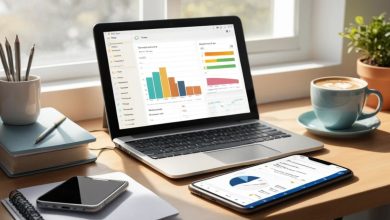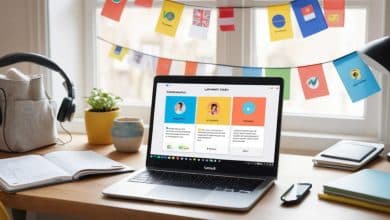10 Free Educational Resources for Homeschool Success
Homeschooling gives families the freedom to tailor learning, but the price of commercial curricula can quickly add up. The good news? A growing library of high-quality, free homeschool resources now rivals many paid options. This guide walks you through ten standout platforms, explains why they work, and shows you how to weave them into a cohesive curriculum—without spending a dime.
Featured-Snippet Snapshot
The best free homeschool resources include Khan Academy, Easy Peasy, CK-12, PBS LearningMedia, Duolingo, National Geographic Kids, Code.org, Scholastic Learn at Home, Crash Course, and Coursera’s free courses.
Why Choose Free Resources?
-
Save money: Quality instruction without textbook or subscription fees.
-
Stay flexible: Mix and match platforms to fit each learner’s pace and interests.
-
Access diverse content: From coding simulations to geography games, variety keeps lessons fresh.
Free options help families customize learning, stretch budgets, and update materials instantly—advantages that paid, print-bound programs can’t always match.
How We Selected the Top 10
Academic depth
Each platform covers at least one core subject thoroughly.
Ease of use
Resources offer intuitive dashboards, search tools, or day-by-day lesson plans.
Truly free
No hidden paywalls or “trial” walls that force upgrades mid-course.
Age and grade coverage
Options span early elementary to high school, so siblings can share a master list.
Top 10 Free Homeschool Resources
Khan Academy
-
Subjects & grades: Math, science, history, economics (K-12).
-
Stand-out feature: Mastery tracking pinpoints gaps and celebrates milestones.
-
Quick start: Create a parent account, assign a course, and set daily goals.
Easy Peasy All-in-One Homeschool
-
Complete K-12 curriculum: Day-by-day lessons across subjects.
-
Faith note: Christian worldview—adjust as desired.
-
Scheduling tip: Use the built-in 180-day tracker to pace your year.
PBS LearningMedia
-
Video-rich lessons: Clips from NOVA, Sesame Street, and more.
-
Teacher guides: Printable discussion questions and standards alignment.
-
Ideal ages: Pre-K through grade 8, with select high-school modules.
CK-12 Foundation
-
FlexBooks & simulations: Customizable digital textbooks and interactive labs.
-
STEM focus: Math, science, engineering.
-
Adaptive practice: AI recommends problems at just-right difficulty.
Duolingo
-
Languages offered: 40+ (Spanish, French, Japanese, ASL, and more).
-
Daily goals: Five-minute streaks build consistency.
-
Gamification: Points, badges, and leaderboards keep learners engaged.
National Geographic Kids
-
Games & quizzes: Ecology, wildlife, and world cultures.
-
Printables: Coloring pages and fact sheets for offline fun.
-
Nature activities: Backyard observations encourage hands-on science.
Code.org
-
Computer-science tracks: Block-based to real-world languages (Python, JavaScript).
-
Hour of Code: Short projects ideal for first-time coders.
-
Parent dashboard: Monitor progress and unlock extra challenges.
Scholastic Learn at Home
-
Reading packs: Fiction and nonfiction paired with comprehension tasks.
-
Thematic units: Space week, ocean week, etc., great for project-based learning.
-
Offline activities: Printable worksheets reduce screen time.
Crash Course (YouTube)
-
High-school friendly: World history, literature, biology, and more in 10-minute bursts.
-
Note-taking guide: Encourage pause-and-reflect moments every few minutes.
-
Safety tip: Use YouTube Kids or playlist links to avoid off-topic videos.
Coursera Free Courses
-
University-backed: Stanford, Yale, and Google career certificates (audit mode).
-
Breadth: Astronomy to data science.
-
Certificates: Optional paid upgrade—skip unless needed for transcripts.
Comparison Table
| Platform | Grades Covered | Core Subjects | Extras | Sign-Up Required | Ads / Pop-Ups |
|---|---|---|---|---|---|
| Khan Academy | K-12 | Math, science, humanities | Mastery dashboards | Yes | No |
| Easy Peasy | K-12 | Full curriculum | 180-day pacing | No | Minimal |
| PBS LearningMedia | Pre-K–8 | All core | Lesson plans | Yes | No |
| CK-12 | 5–12 | STEM | Interactive sims | Yes | No |
| Duolingo | 3–12 | Languages | Gamified practice | Yes | Yes |
| Nat Geo Kids | K-6 | Science, geography | Games & printables | No | Yes |
| Code.org | 2–12 | Computer science | Hour of Code | Yes | No |
| Scholastic | K-6 | Literacy | Offline packs | No | Yes |
| Crash Course | 8–12 | Humanities, STEM | Playlists | No | Yes |
| Coursera | 9–12+ | College-level | Certificates (paid) | Yes | Some |
Case Study: How One Family Saved $800 Per Year
The Jackson family—parents working full-time with kids in grades 4 and 7—switched from a $70-per-month boxed curriculum to the resources above.
-
Step 1: Replaced math textbooks with Khan Academy and CK-12 FlexBooks.
-
Step 2: Used Easy Peasy for language arts and social studies.
-
Step 3: Added weekly National Geographic Kids projects for science labs.
Results after six months
| Metric | Before | After |
|---|---|---|
| Annual curriculum cost | $960 | $0 |
| Weekly prep time | 6 hrs | 3 hrs |
| Standardized test scores | 82nd percentile | 85th percentile |
Beyond the financial win, the children reported higher engagement and enjoyed choosing electives like coding and astronomy.
Step-by-Step Tutorial: Build Your Free Curriculum in One Week
-
Define learning goals
-
List state requirements or personal milestones (e.g., multiplication mastery).
-
-
Match subjects to resources
-
Example: Math → Khan Academy, Reading → Scholastic, Science → CK-12 + Nat Geo Kids.
-
-
Create a weekly schedule
-
Use a free Google Sheets template with columns for subject, platform, and daily lesson link.
-
-
Set up progress tracking
-
Color-code completed cells or integrate Trello cards with due dates.
-
-
Review and adjust every Friday
-
Celebrate streaks, note struggles, and swap in fresh resources as interests evolve.
-
FAQs
Are free homeschool resources accredited?
Most free platforms are supplemental; accreditation usually applies to full-service online schools. Always verify with your local education authority if formal transcripts are required.
How can I print worksheets without spending a fortune on ink?
-
Print in draft or grayscale mode.
-
Use a local library or office-supply store for bulk pages.
-
Laminate frequently reused sheets and write with dry-erase markers.
Can these resources replace a full curriculum?
For many families, yes—especially in elementary and middle school. In high school, you may supplement with community-college dual-enrollment or paid lab kits for science credits.
What about socialization?
Join homeschool co-ops, Scouts, sports leagues, or virtual clubs like Code.org forums to keep peer interaction strong.
Conclusion
Free educational platforms have closed the quality gap with paid curricula, giving homeschoolers unparalleled flexibility and cost savings. By blending robust tools like Khan Academy for math, CK-12 for science, and Duolingo for languages, you can craft a rich, engaging program without opening your wallet. Start by testing two new resources this week, track your learners’ progress, and watch academic confidence—and your budget—grow together. Feel free to bookmark this guide and share it with other families ready to thrive on a zero-cost homeschooling journey.
Published on: 4 de June de 2025








